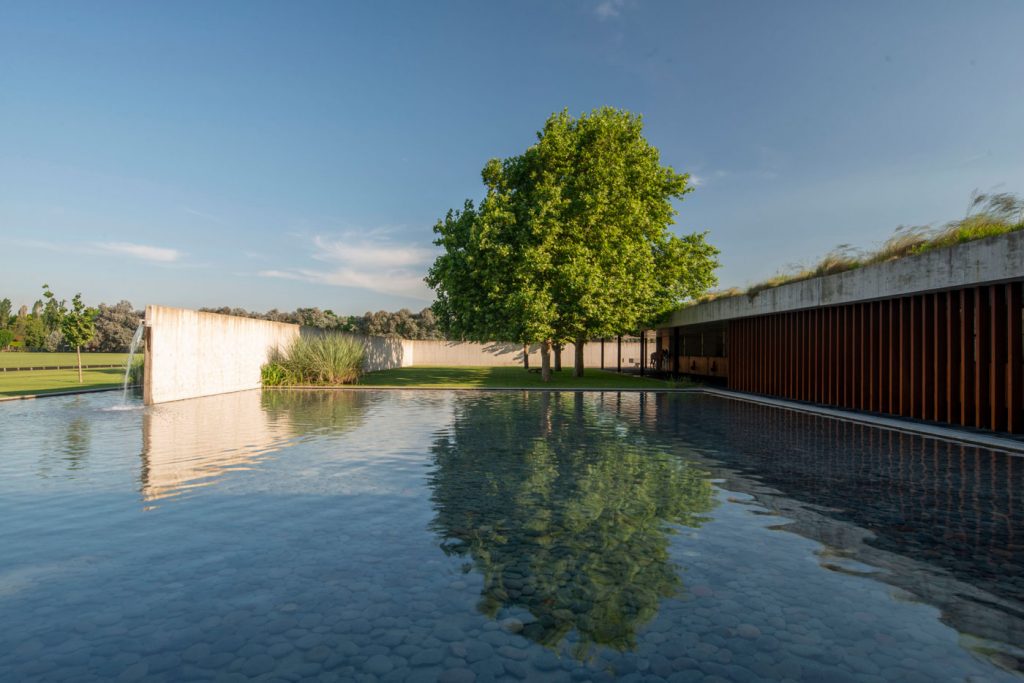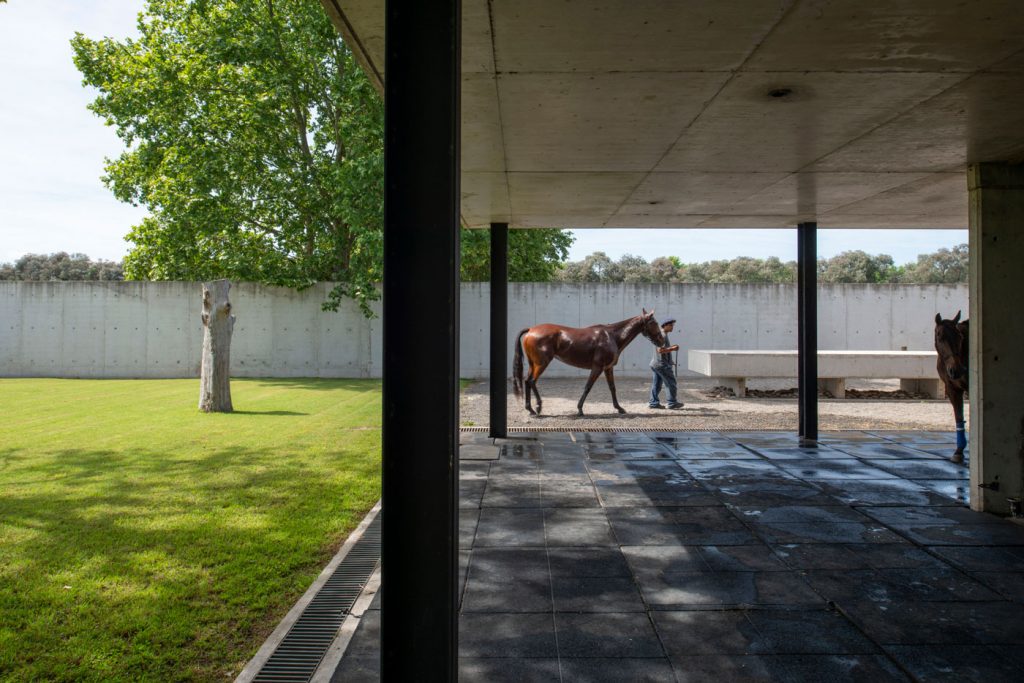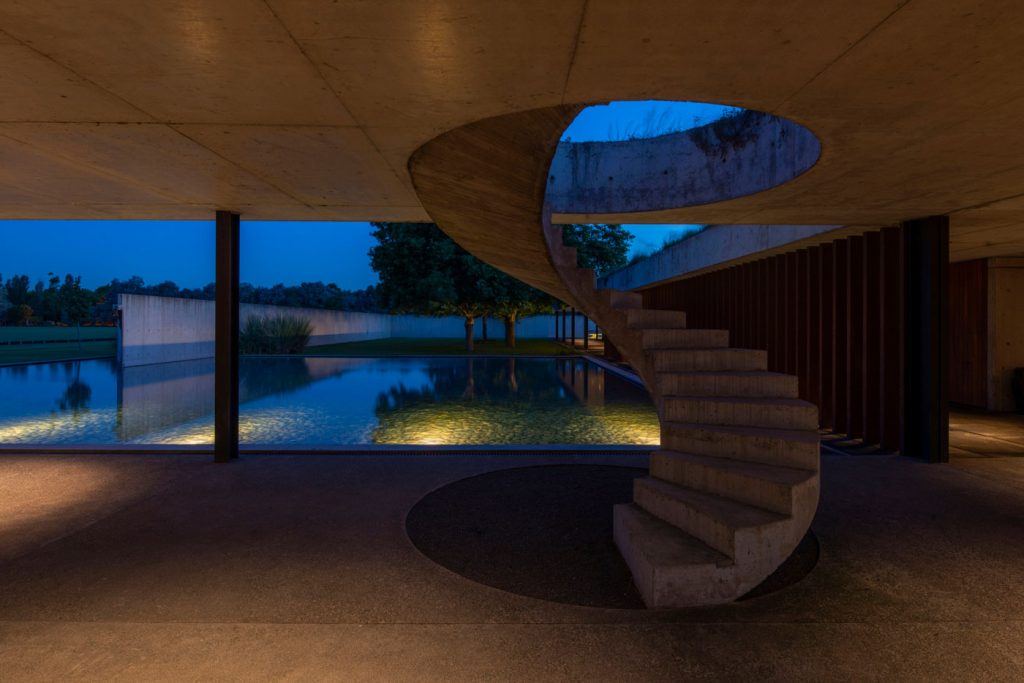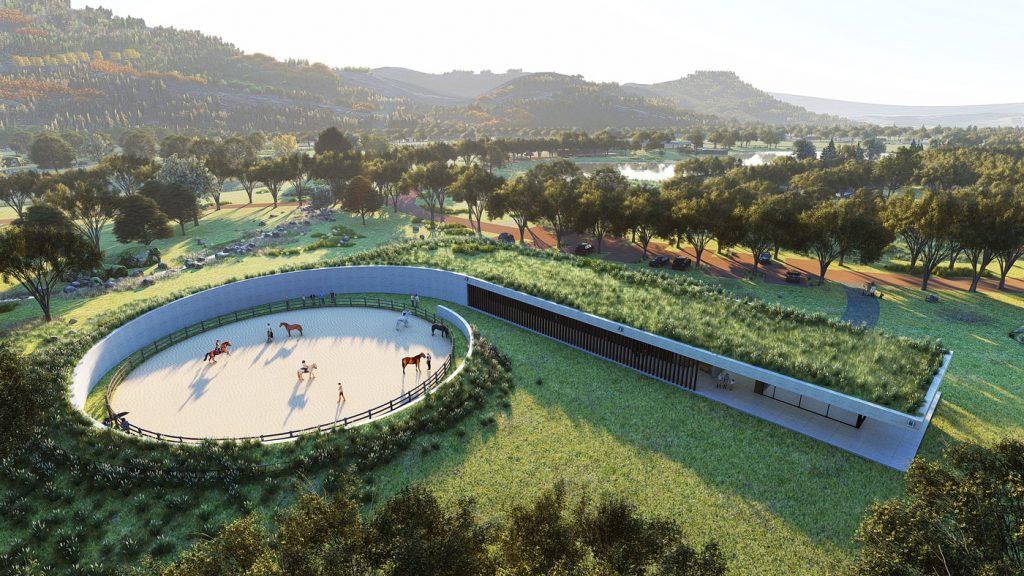Ask anyone to name a famous polo player, and the most likely response will be Nacho Figueras. As the face of Ralph Lauren Polo for 20 years, Figueras has achieved a level of popular recognition that eludes many other worthy stars of the pitch. But Nacho is a man who defies expectations. He is, of course, a superb athlete and possessed of considerable personal charms, but there’s more to him than the obvious blessings that meet the eye. His interests and talents range far beyond polo, extending to business and, most importantly, architecture and design. This passion is reflected in the Figueras Design Group (FDG).
The only thing better than one Nacho is two, and Figueras’ partner in FDG is his close friend and renowned architect, Nacho Ramos. Figueras and Ramos met more than 20 years ago, introduced by their mutual friend Mariano Aguerre, a former 10-goal player. Ramos was surprised by the 18-year-old’s deep interest in architecture and art. A few years later, Figueras was playing in Palm Beach, Florida, and Ramos lived nearby in Boca Raton, giving them ample time to bond over their shared passions. It wasn’t long before they had embarked on their first design project, the home where Nacho and his family still live today.



With so many common interests, it was only natural that Figueras and Ramos began to talk about working together. Ramos, a horse lover and rider himself, had already built stables for a number of Argentina’s top polo players, including Adolfo Cambiaso. Together, Figueras and Ramos felt they could offer a unique partnership that would push the boundaries of design and architecture in equestrian living. Once they began to envision the course their partnership could take, they added yet another Nacho to the mix, Ramos’ son, Ignacio Ramos. The younger Ramos studied architecture in the U.S. and Europe and completed his graduate work at Columbia University in New York City. As a third partner in FDG, Ignacio shares his father’s unique creative vision.
The project that ultimately launched FDG was Figueras’ breathtaking polo stable. You might recognize it from the cover of Architectural Digest. Figueras had two goals from the outset of the project: “I wanted the stable to be a museum for horses. I consider myself a collector. Some people collect cars; some people collect art. I collect horses. I bring together the best bloodlines for polo ponies from all over the world, and I wanted to create a museum to showcase what we have created over time. Secondly, I wanted to design a 35,000 square foot stable that would not be a great white whale against a green canvas of polo fields and the flat expanse of the Argentine pampas.” Figueras’ polo stable, completed in 2016, epitomizes the principles that serve as the foundation for FDG: respect for the environment and a love of horses.
Ramos is quick to note that while the barn is a stunning example of architectural design, it also serves the purpose for which it was created with great efficiency. “It functions very well as a barn,” he says. “It’s a great atmosphere for the horses and for the grooms who work there. What’s interesting, though, is that despite the practicality, the barn incorporates a sequence of beautiful spaces and moments. It could be a museum or a school.” Estudio Ramos, the architectural firm owned by Ramos and his son, Ignacio, presented the project at the Venice Architecture Biennale 2016. The striking design of the stable caught the interest of the architecture and design industry, and photographs of the now-iconic barn have appeared in publications around the globe.
With the stable completed, Ramos and Figueras realized that they had identified a niche in equestrian architecture, and FDG was established to pursue other projects in their signature style. They’re currently involved in a significant project in California’s Napa Valley to create an equestrian community incorporating stables, polo fields, stadium jumping and riding arenas, and other equestrian elements, together with a clubhouse, homes, and a hotel. The project is ambitious on many levels but remains rooted in FDG’s immutable principles of respect for the horse and the environment.
Says Ramos, “You must realize that nothing is more beautiful than nature. The footprint of any structure destroys life on the building site, so we take pains to be in harmony with nature and respectful of nature. We also pay great attention to scale to avoid overbuilding.” Every project is created with the ability to blend into its surroundings as the foremost consideration. Green roofs, such as the one gracing Figueras’ stable in Argentina, are one element FDG employs to soften the visual impact of their designs. Naturally, respect for the environment goes far beyond visual harmony. FDG designs with sustainability in mind and their work incorporates green building practices that are environmentally responsible and resource-efficient from all stages through design and construction to operation and maintenance.



Figueras and Ramos have wide-ranging plans for FDG’s future. Figueras is on the board of Amaala, a luxury tourism project that is part of Saudi Arabia’s Vision 2030 road map, and FDG has developed the master plan for the project’s polo and equestrian club. The firm is also competing for another Saudi project outside of Riyadh. Both Ramos and Figueras are very excited to be exploring opportunities in the Middle East, as the challenges of a vastly different culture and climate present an exciting prospect to extend the boundaries of equestrian design.
Given the breadth of the projects underway and the potential of designing for the drastically different climate of the arid Middle East, FDG is looking forward to significantly expanding its footprint. Says Figueras, “We don’t see ourselves just as equestrian designers. We have a lot more to offer. Some of our projects include housing and hospitality, including restaurants and hotels. We have a lot more to give, and the projects we’re working on will prove what we can do. We shoot for the stars.”
Taking their completed and ongoing projects as just a taste of what’s to come, there’s every reason to believe that Figueras and Ramos can look forward to a future of stellar achievement in architectural design.
